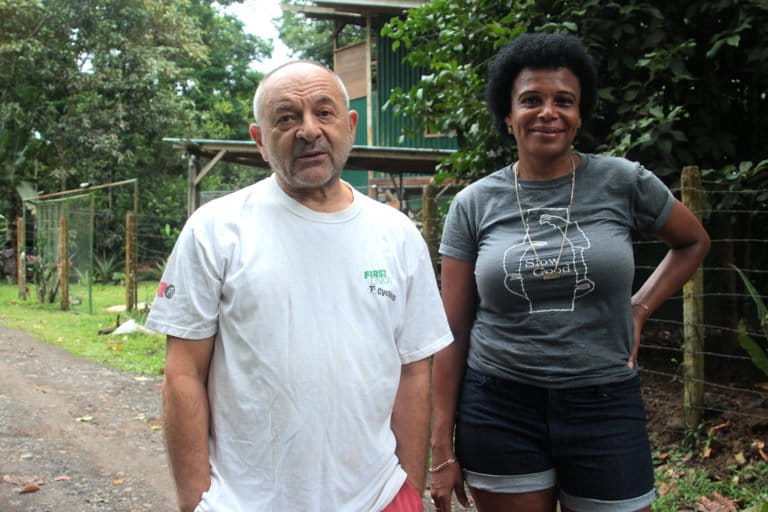Mongabay’s reporter also discussed the broader threats of deforestation and forest degradation in Costa Rica, which, despite its reputation for conservation, continually loses patches of forest. Local communities expressed their support for the bridges, recognizing that connectivity is key for wildlife and for preserving the country’s biodiversity.
Impact
After reading the feature, a conservation project in Brazil recognized it was similar to the challenge faced by the endangered northern maned sloth, a species endemic to the country’s Atlantic Forest. At this point, the Mongabay article became a catalyst for action.
Conservationist José Truda Palazzo, who works for the Brazilian Nature Conservation Institute (IBRACON), is involved with a maned sloth project there, and recently participated in establishing the Maned Sloth Institute (Instituto Preguiça-de-coleira) to protect the species and its habitat.
“This article helped us realize that cable bridges could help our situation, so I wrote to the Foundation and they helped us design our bridges, and now are helping get funding for more,” Palazzo shared with Mongabay.
Palazzo, who has worked on a wide range of conservation issues for decades, primarily focusing on marine conservation, especially international treaties and public policy, regularly looks to Mongabay: “I consider Mongabay my main source of credible environmental information nowadays, and besides using its reporting, especially on marine issues and marine protected areas, as input sources to my work, I also spread it around widely as I manage several Facebook Groups (Global Marine Conservation, Ecoturismo: Brasil & Mundo, Divers for Sharks, etc.) and am a member to some 70 others, ranging from diving to tree planting, and I post links to your articles to several groups on an almost daily basis, helping to get more people informed about what’s going on,” he wrote in an email to Mongabay.
By amplifying the work of the Sloth Conservation Foundation, Mongabay’s coverage not only documented how communities in Costa Rica are using a simple yet effective technology to give sloths a helping hand, it also inspired conservationists in Brazil to adapt this approach to their own context, in support of a lesser-known and endangered sloth species.
Support independent environmental journalism
If you are interested in helping shed light on conservation issues such as this, there are two excellent ways you can do so with Mongabay. First, consider making a donation, which directly helps us continue to produce high-impact journalism from nature’s frontline. Second, subscribe to Mongabay’s newsletter to get the latest environmental news delivered right to your inbox, and share whatever articles move you with friends and family.
About Mongabay
Mongabay is a nonprofit environmental science and conservation news platform focused on providing original, reliable, and independent journalism from nature’s frontline. We pride ourselves on producing reporting that has substantial and tangible impacts around the world.
Banner image: Sloth crossing a rope bridge installed as part of the Connecting Gardens Project in Costa Rica. Photo courtesy of the Sloth Conservation Foundation.


